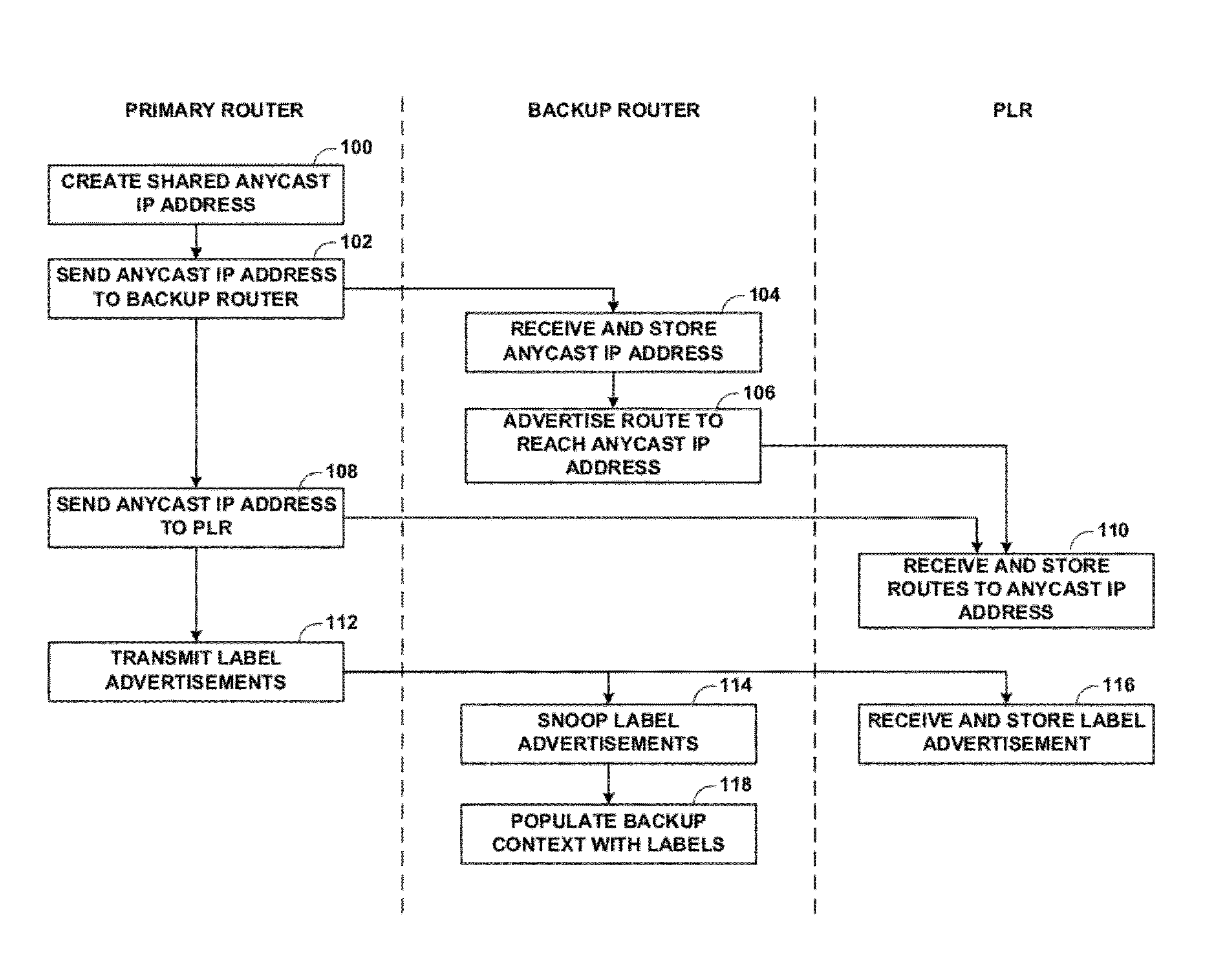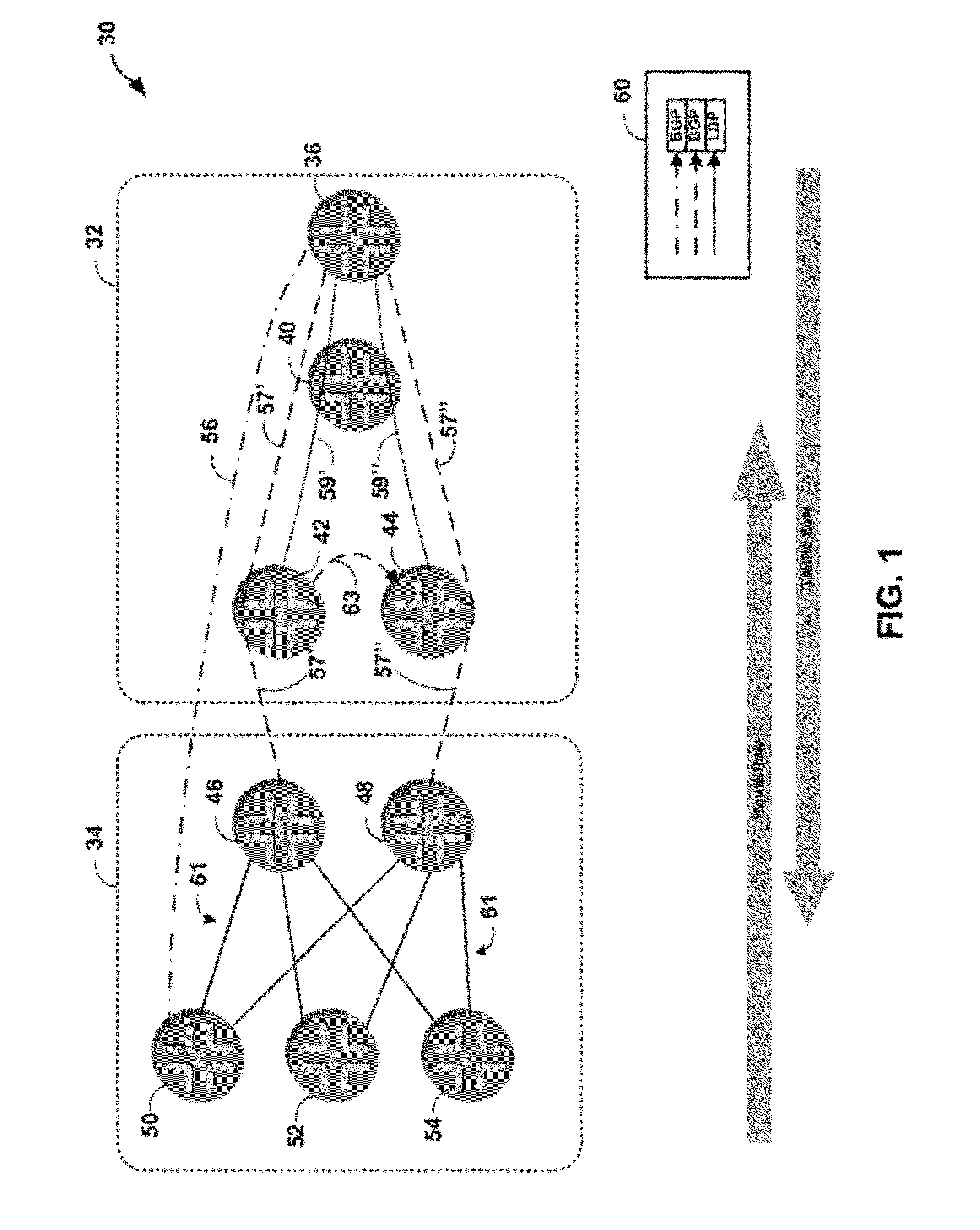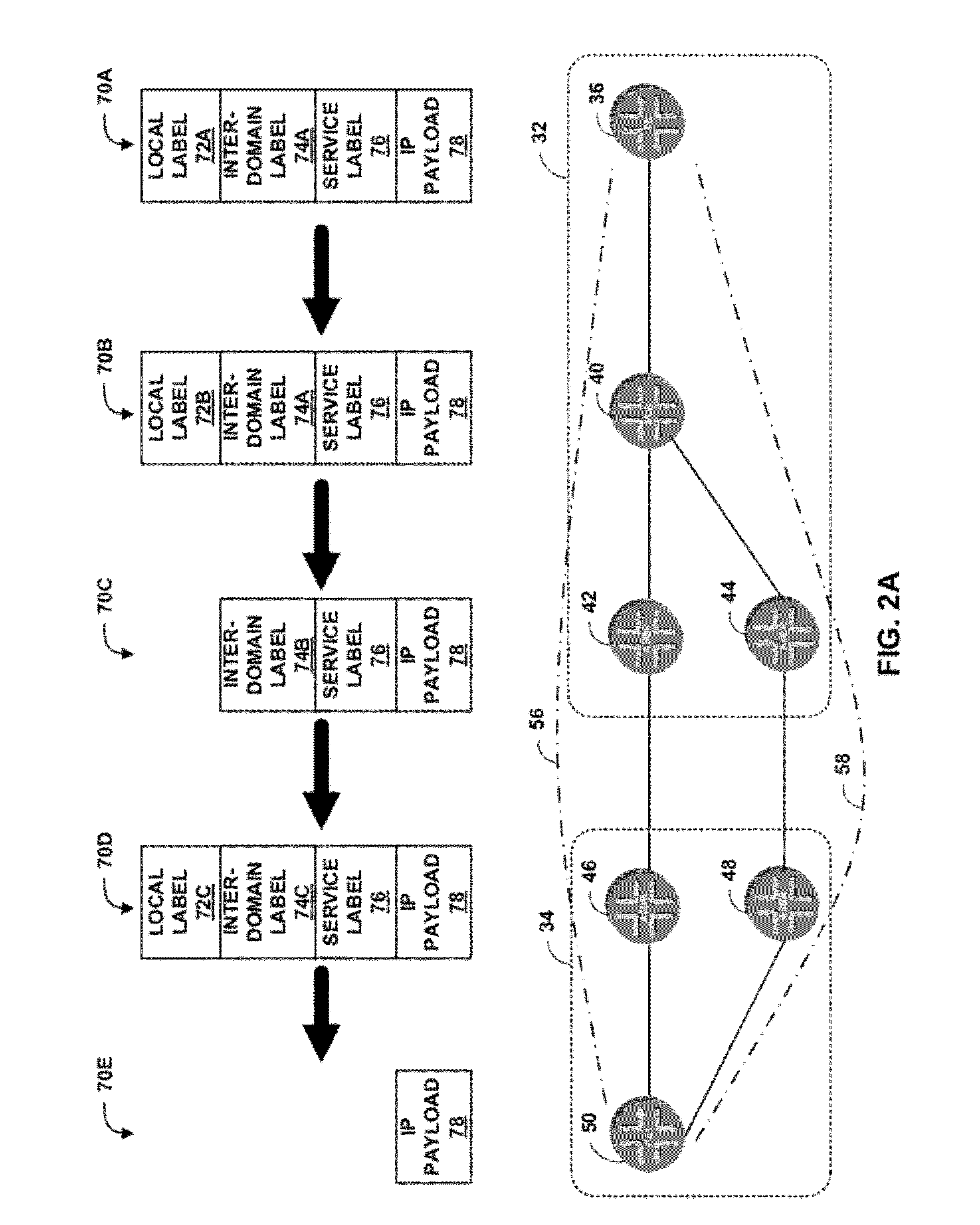Egress protection for label switched paths
a label switched path and egress protection technology, applied in the field of routing packets within the computer network, can solve the problems of routers along the lsp not being able to automatically correct the lsp, no longer being able to provide routers, and no longer being able to repair the lsp automatically
- Summary
- Abstract
- Description
- Claims
- Application Information
AI Technical Summary
Benefits of technology
Problems solved by technology
Method used
Image
Examples
Embodiment Construction
[0024]FIG. 1 is a block diagram illustrating example network 30 that provides protection for an egress router of a label switched path (LSP). In the example of FIG. 1, network 30 includes autonomous system (AS) 32 and AS 34, which are independent systems. In general, an autonomous system is an individual collection of network elements, such as routers, switches, links, or other network devices, maintained by, for example, an Internet service provider or other entity. Routers at the edge of an autonomous system are generally referred to as provider edge (PE) routers. AS 32, for example, includes router 36 that is a provider edge router, and AS 34 includes PE routers 50, 52, and 54. In the example of FIG. 1, label distribution messages (e.g., signaling messages for a label distribution protocol such as LDP or RSVP) for forming an LSP are propagated left-to-right, while data to be transported along the LSP are propagated right-to-left.
[0025]Different autonomous systems may implement di...
PUM
 Login to View More
Login to View More Abstract
Description
Claims
Application Information
 Login to View More
Login to View More - R&D
- Intellectual Property
- Life Sciences
- Materials
- Tech Scout
- Unparalleled Data Quality
- Higher Quality Content
- 60% Fewer Hallucinations
Browse by: Latest US Patents, China's latest patents, Technical Efficacy Thesaurus, Application Domain, Technology Topic, Popular Technical Reports.
© 2025 PatSnap. All rights reserved.Legal|Privacy policy|Modern Slavery Act Transparency Statement|Sitemap|About US| Contact US: help@patsnap.com



